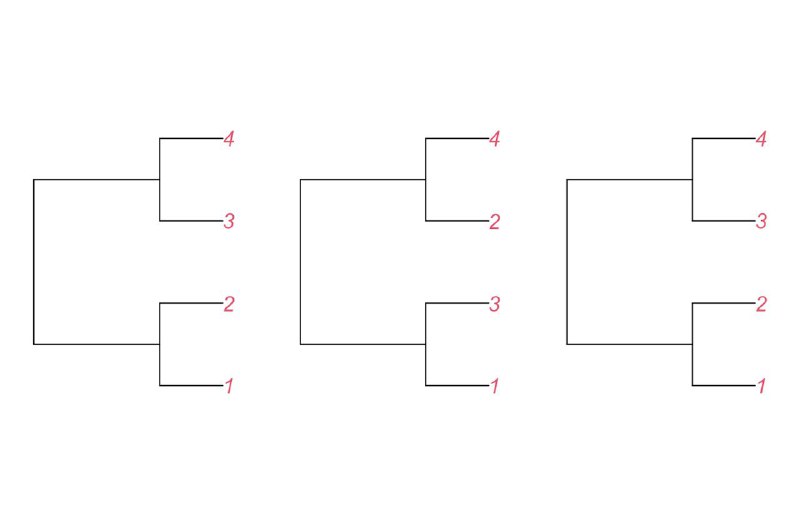group-telegram.com/rantiquity/362
Create:
Last Update:
Last Update:
Допустим, у нас есть три дерева. Таких, как на картинке 1. Вот код для воспроизведения:
library(ape)
tr1 <- ape::read.tree(text = "((1,2),(3,4));")
tr2 <- ape::read.tree(text = "((1,3),(2,4));")
tr3 <- ape::read.tree(text = "((1,2),(3,4));")
par(mfrow = c(1, 3), mar = c(5,1,5,1), cex = 1)
plot.phylo(tr1, tip.color = 2 )
plot.phylo(tr2, tip.color = 2 )
plot.phylo(tr3, tip.color = 2 )
Кластеры 1-2, 3-4 встречаются в двух деревьях, остальные лишь в одном. Задача — найти наиболее устойчивые кластеры методом простого большинства. Это можно сделать при помощи консенсусных деревьев.
Сначала считаем консенсус, аргумент p указывает, что кластер должен быть представлен не менее, чем в половине деревьев. Также уточняем, что наши деревья укоренены:
cons <- consensus(list(tr1, tr2, tr3), p = 0.5, rooted = TRUE)
Консенсус тоже можно изобразить; дополнительно для узлов укажем силу консенсуса (2/3 = 0.67):
par(mfrow = c(1,1), mar = c(5,5,5,5))
plot.phylo(cons, tip.color = 2)
nodelabels(round(cons$node.label[3],2), 7, frame = "c", cex = 0.7)
nodelabels(round(cons$node.label[2],2), 6, bg = "yellow")
Это очень простое консенсусное дерево, построенное по методу простого большинства, которое позволяет «обобщить» несколько разных деревьев. Полезно не только эволюционным биологам, но и тем, кто работает с текстами. Чуть позже расскажу, как.


